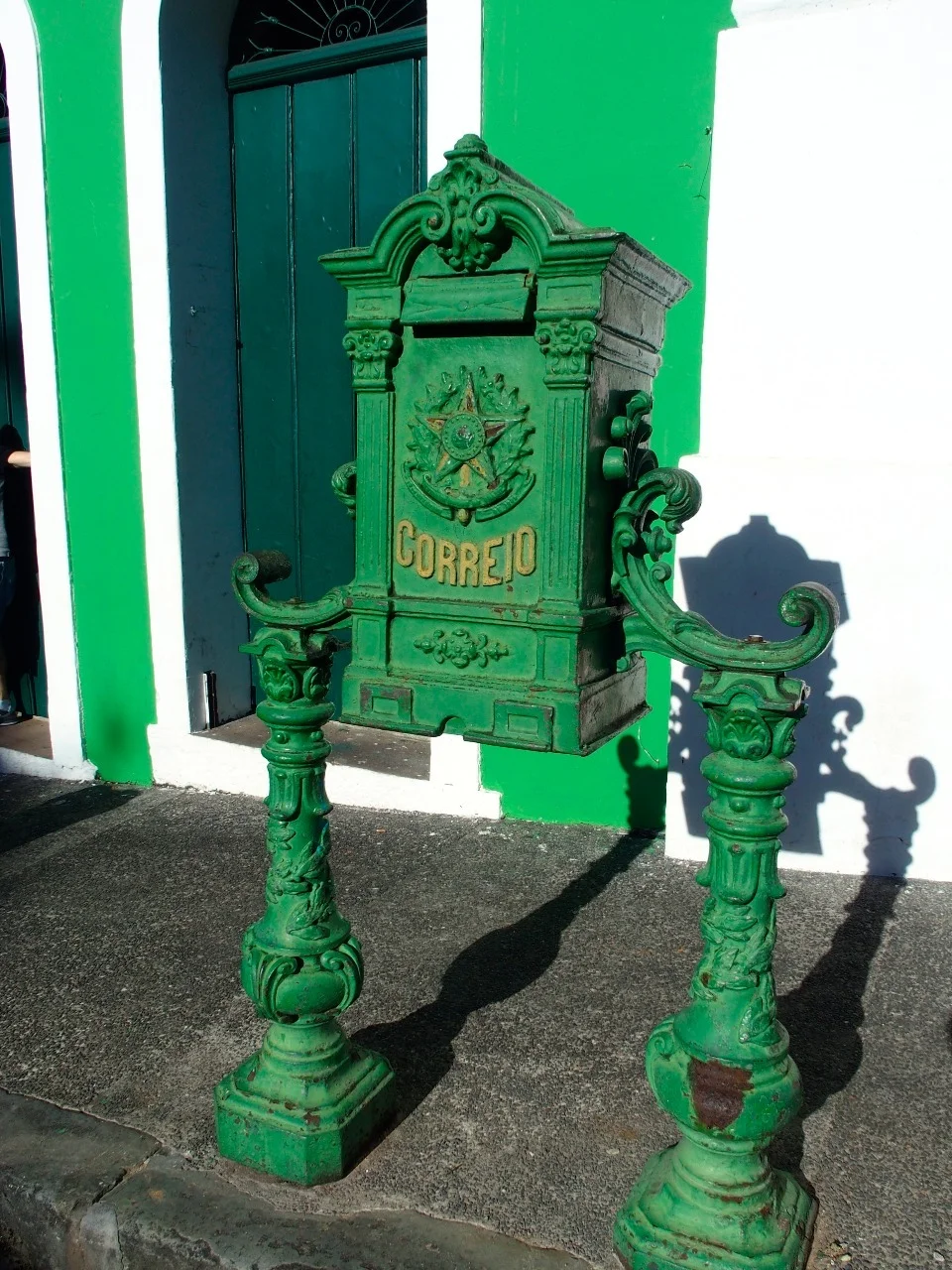Salvador, Brazil
Eight years ago I was lucky enough to visit Sao Paolo with Iron Maiden. It was quite literally a flying visit as part of the first world tour they did in Ed Force One, their own jumbo jet. We returned to Brazil a couple of years later to premiere the film of that tour in Rio and take a boat trip up the Amazon to a gig in Manaus, made miserably more memorable by a severe reaction to my malaria medication.
Yet with any work trip there was something missing; the husband! So we're finally rectifying that omission with a whistle stop Easter tour of Lonely Planet's top Brazilian attractions together: the Iguassu Falls, Rio de Janeiro, the Bahian coast and the original capital of colonial Brazil, Salvador.
And, here we are - after a twelve hour flight, followed by a five hour stopover in Sao Paolo's airport - landing into a swelteringly hot Salvador on the north east coast of Brazil; a city rife with a dark and colourful history, full of voodoo, slavery, sex and sin.
We're met by Marcus, our guide for the next few days, who it transpires over the next 24 hours has an intimate history with all of the above. It possibly explains the enormous tube of KY jelly Coman finds in the car the following morning.
As Marcus drives us into Salvador, through a dramatic avenue of interlocking bamboo where revolutionaries hid planes during the war, he warns us to be on our guard at night in Salvador as not only will people try and pickpocket us, but men will try and sell us sex on every street corner. Apparently.
He's full of fascinating information about the city of his birth, a city spread around the second largest bay in the world and comprising three million people, of whom 80% are of African descent. We discuss the current corruption scandal gripping politics in the country and are given a lesson in the history of slavery before we reach our destination, the Unesco world heritage district of Pelourinho in the heart of the old town, so named because it means 'whipping post'. Masters used to publicly flog their slaves to death in the main square.
Marcus drops us at our hotel, Casa do Ameralindo, an old house on a cobbled street that's been restored into a gorgeous boutique hotel. After check-in we take lunch in the little garden terrace, wolfing down a tangy mango, papaya and shrimp salad accompanied by the local beer, which is called Schin.
As a stronghold of Catholicism, Salvador is home to 237 churches, many of the most elaborate here in Pelourinho and according to our schedule Marcus is due to show us some as part of our city tour tomorrow. However, with it being Good Friday then, many of the famous statues will be draped in black so he recommends we try and visit the most impressive ourselves this afternoon.
With the clock ticking before they close we race to the Igresa do Rosario dos Pretos (Church of the Rosary of Black Men), which was constructed over the course of 100 years by slaves. Periwinkle blue on the outside, inside it has depictions of Christ and various saints as black men, hiding the roots of the slaves' own Condomblé religion in plain sight.
Next up is the Church of St Peter and then we make it to the grand, most famous church of them all, Igreja Sao Francisco. They've just closed it but after begging for a glimpse the doorman relents and we are ushered into its gold-plated magnificence all by ourselves. It's pretty jaw-dropping, a baroque masterpiece to which pictures do no justice. I've never seen anything quite like it.
By now, we're shattered so following a quick siesta, we head up to the rooftop bar in our hotel for a caipirinha - far too sour for me - and then wander to the theatre for a performance by the Balé Folclórico da Bahia. An hour-long display of the music and dances of the Bahian people, we are treated to chants and invocations of Condomblé, performed in enormous costumes, praising and telling the stories of the African gods (Orixá), finishing with the ritual fighting of Capoeira and a group Samba.
We finish the evening with dinner at a restaurant called Cuco in the little square named Cruzeiro de San Francisco, watching a band play through the windows in the tropical heat while we dine in the air-conditioned interior. It seems there's music everywhere as during the short stroll back to our hotel, band after band are playing in every public space and restaurant. We stop and catch the odd tune but bed is calling with an even more potent song of the siren.









































